Best guitar amps under $300/£300 in 2025: Get the guitar tone you want for less
From practising at home to playing your first gig, the best guitar amps under $300/£300 will help elevate your guitar playing
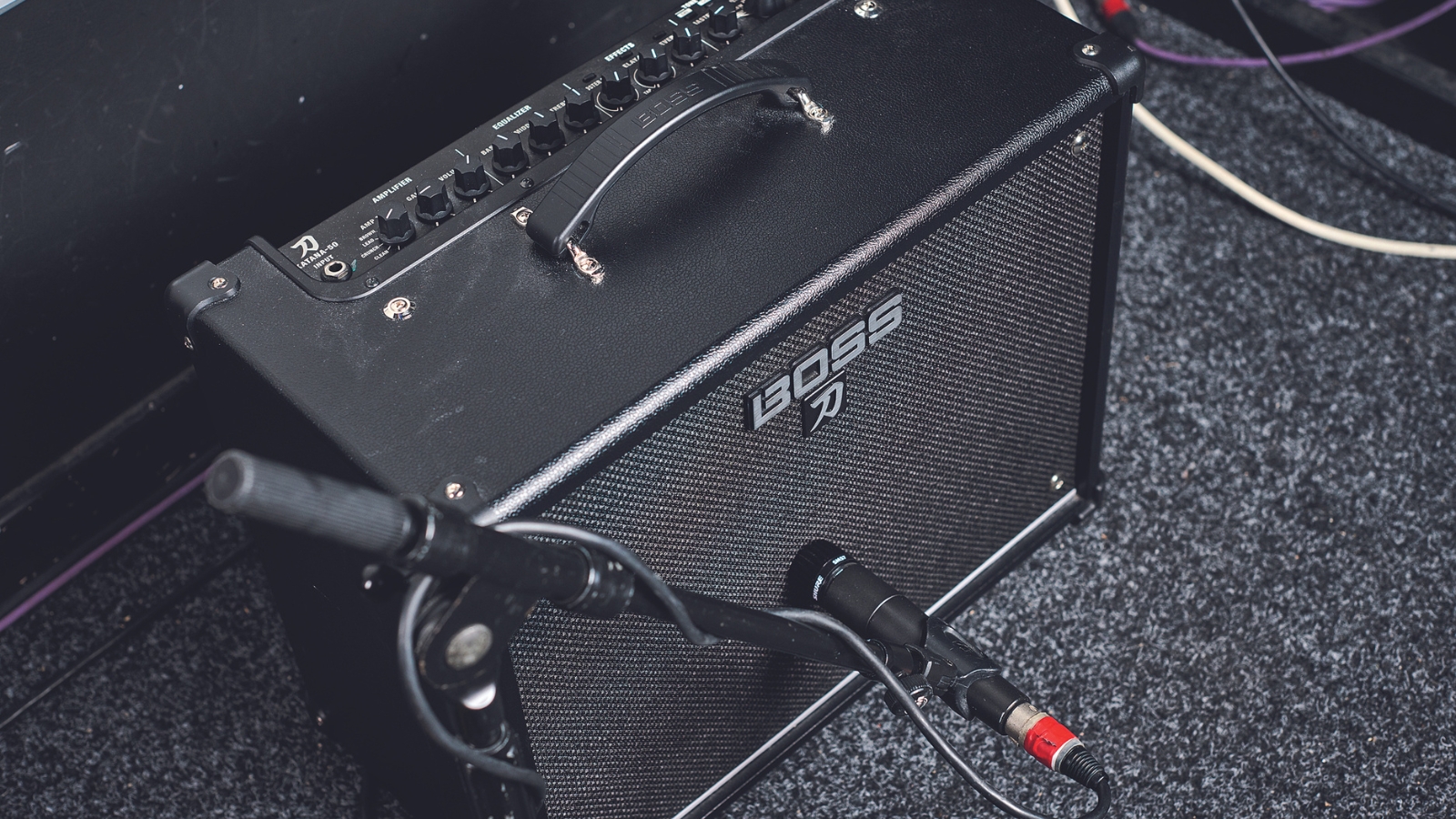
Whether you’re a guitarist on a budget, or you’re just looking to pick up your first proper amplifier, the best guitar amps under $300/£300 will make certain you’re always ready to rock. From perfect practice partners to your first gigs, our selection of amps offer great sound and tonal flexibility.
Your amp is the heart of your overall tone and we’d go as far as to say it’s one of the most important aspects of your entire rig. You can have the most expensive guitar, loads of pedals, and well-honed technique but none of that matters without a great amp so everyone can hear your playing as it’s meant to be.
We’ve tested and chosen a wide selection of amplifiers under $300/£300 for this guide, but if you’re new to guitar amps then make sure you check out our buying advice section for more information. For those who just want to see some of the best budget guitar amps available today, keep scrolling for our top picks.
Best guitar amps under $300/£300: MusicRadar’s Choice
For us, the Orange Crush 35RT is undoubtedly the best amp under $300/£300. Its signature, searing dirt sound is great for rock and heavier styles whilst the clean channel offers a pristine sound that’s great for pedals. Headphone and direct recording outs make this a versatile amplifier for home recording and silent practice whilst the onboard reverb offers some additional shimmer to your sound.
If you want the ultimate flexibility, then you’ll want to take a look at the Boss Katana-50 MkII. Packed with awesome amp tones and Boss’ trademark studio-quality effects, the Katana allows you to build your ideal rig as well as giving excellent connectivity options and being loud enough for small shows.
Best guitar amps under $300/£300: Product Guide
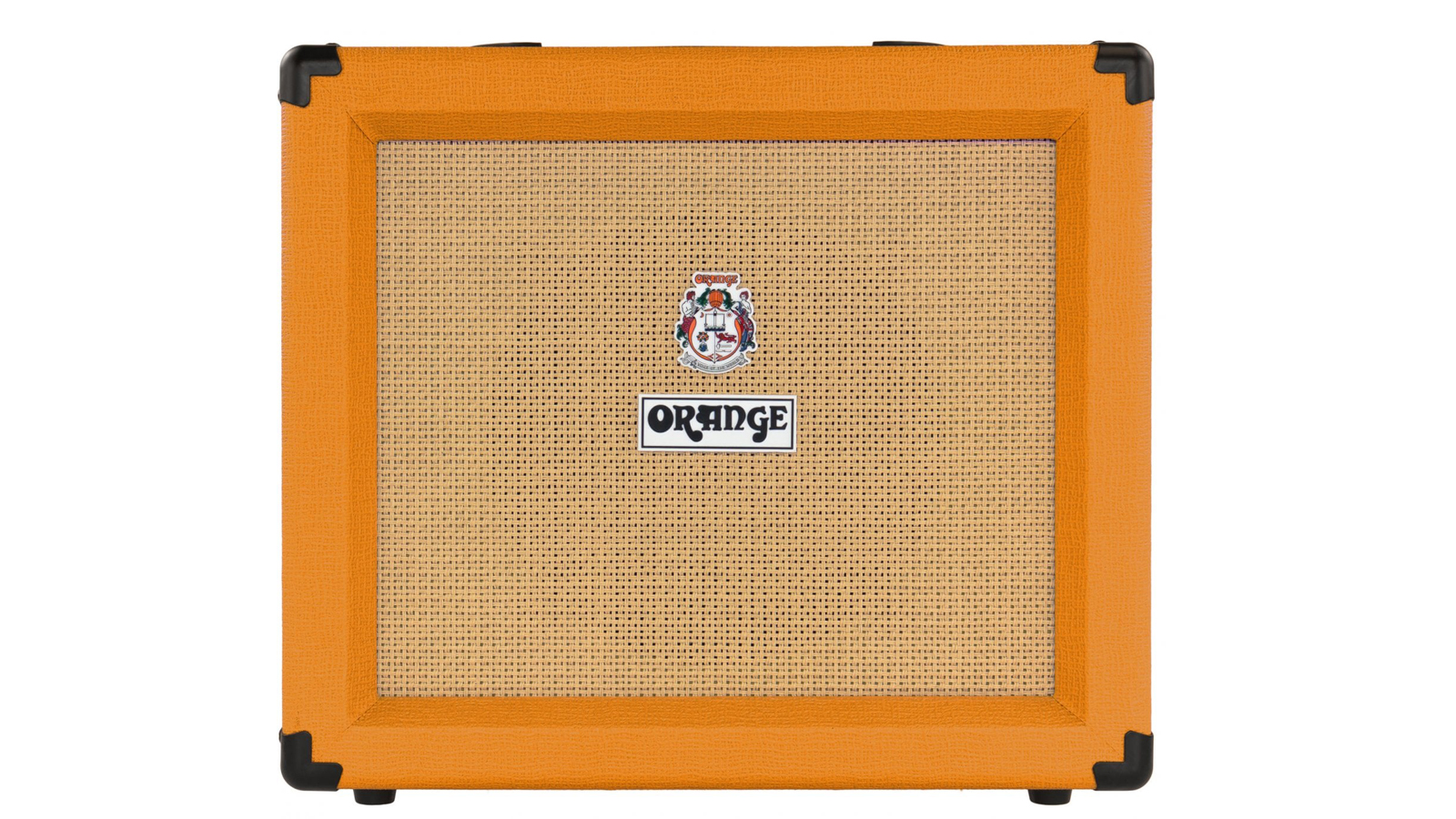
Specifications
Reasons to buy
Reasons to avoid
Orange amps are one of the biggest names in the game thanks to their powerful, unique tonal voice. The Orange Crush 35RT gives players the sound and features of the company's more expensive tube amps, in a unit that is unbelievable value for money.
The Crush 35RT guitar amp has two channels, clean and dirty, with plenty of scope to cover a huge array of sounds. The clean channel is warm and full, whilst the dirt channel can do everything from Britpop to Slipknot.
The built-in reverb delivers a shimmery ambience to your playing, whilst the onboard tuner ensures you’re always in the right key. The CabSim circuit even lets you record straight to your computer - using the amp essentially as an audio interface. Great for getting your ideas down whenever inspiration strikes.
Read the full Orange Crush 35RT review
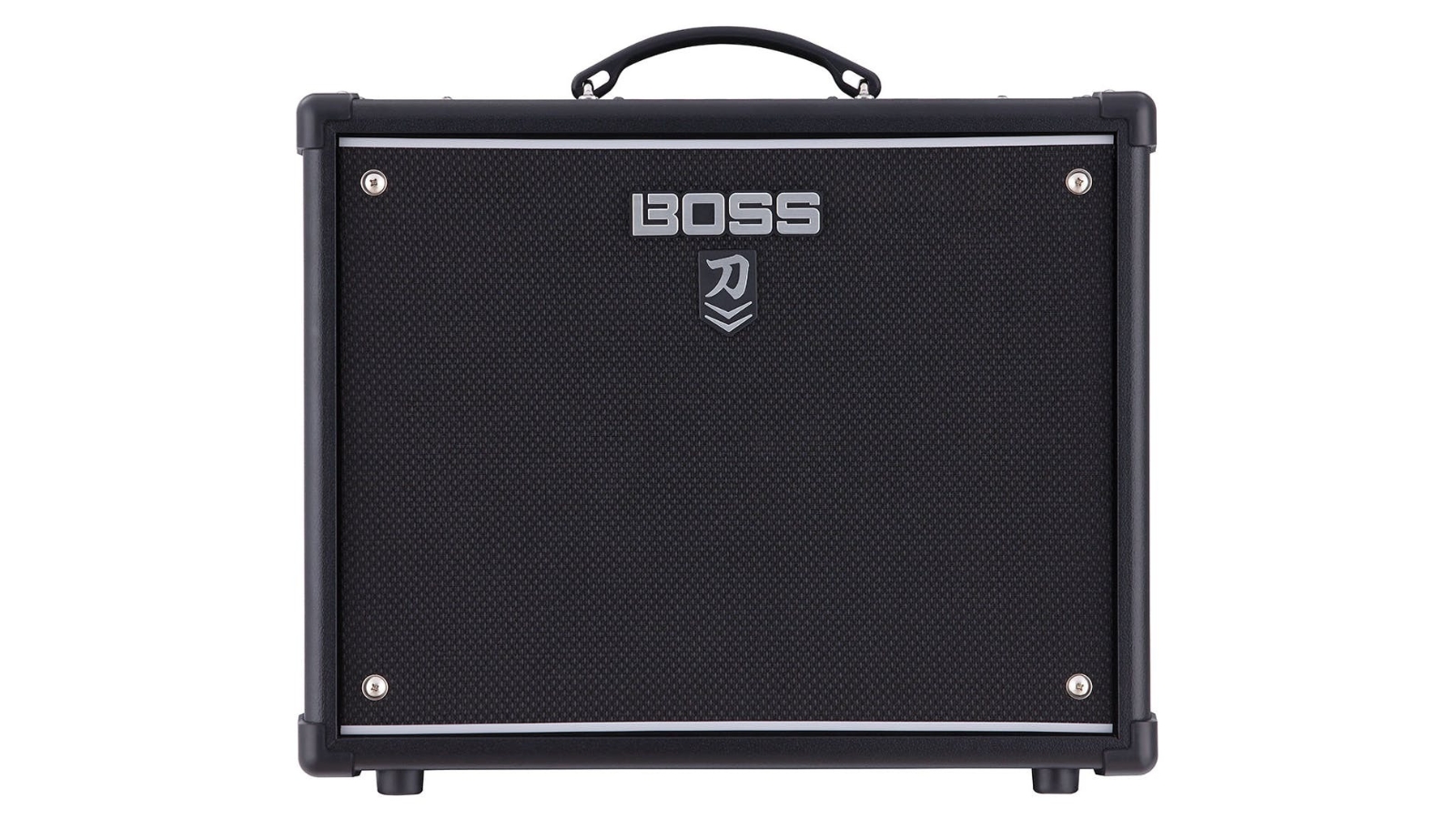
2. Boss Katana-50 MkII
Our expert review:
Specifications
Reasons to buy
Reasons to avoid
One of the most popular modeling amps in the world, the Boss Katana-50 MkII is a fantastic quality investment for any guitarist. Perfect for beginners and veterans alike, it’s selection of amp sounds and effects makes it incredibly versatile.
With five different amps and over sixty effects, you’ll be hard pressed to find a sound that isn’t available here. From modern high gain to boutique tube clean tones, Boss have accurately modeled a host of famous amplifiers to give you a versatile backline to pick from.
The Katana also features loads of great connectivity options with direct recording out and well as a USB for loading presets and recording. You also get a headphone out and connection for an external expression pedal, rounding out an absolutely phenomenal feature set of the money.
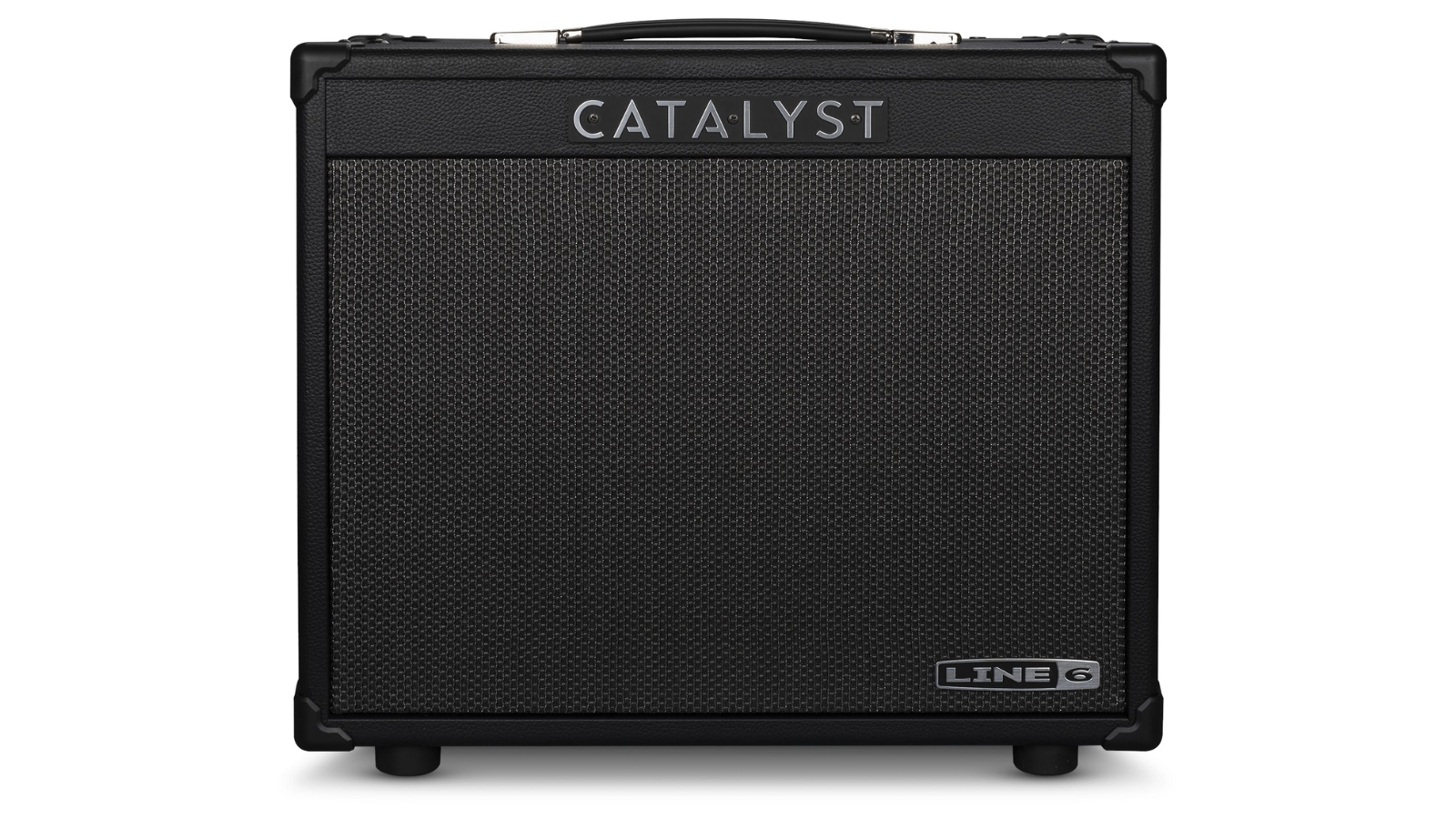
3. Line 6 Catalyst 60
Our expert review:
Specifications
Reasons to buy
Reasons to avoid
Perfect for players who want lots of different sounds, or beginners looking for their own signature tone, the Line 6 Catalyst 60 is a great choice for an amp under $300/£300. Coming from the creators of the modeling amp, the Catalyst has a storied heritage to pull from with loads of top quality sounds.
Despite Line 6’s reputation for high gain models, the Catalyst actually features a majority of cleaner or tube-style saturated amp models. When we got our hands on it we couldn’t stop playing on the boutique setting, but all six models offer the realistic feel of a much pricier tube amplifier.
Considering the quality of the effects on the Catalyst t’s a bit of a shame that you can only run two at once, with one of them having to be reverb. That said these are a mixture of Helix and vintage Line 6 effect algorithms, with plenty of great sounding delays, reverbs, and even some more esoteric pitch shifting and synthesizer type sounds.
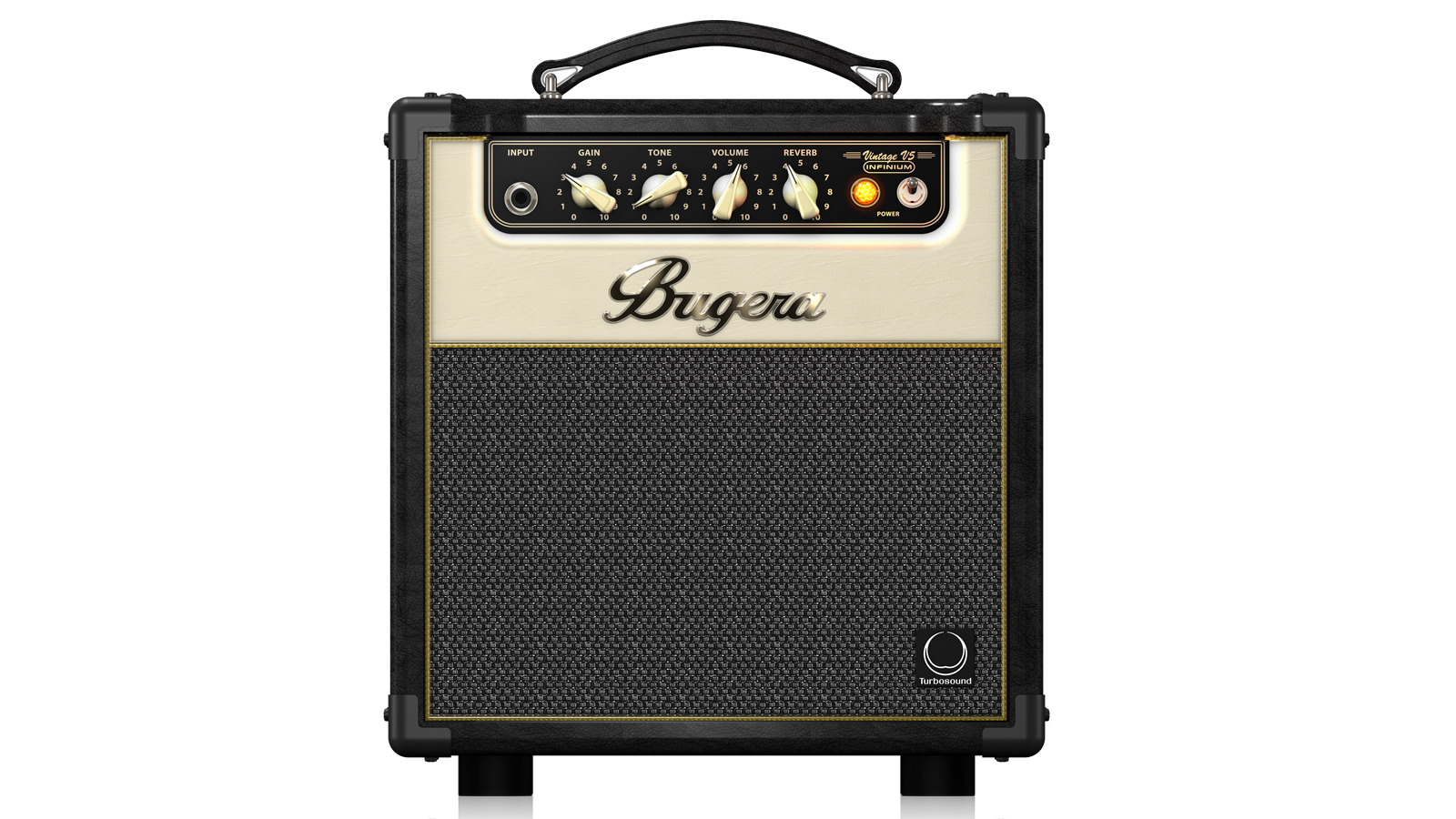
4. Bugera V5 Infinium
Our expert review:
Specifications
Reasons to buy
Reasons to avoid
If you want to understand what all the fuss about tube amps is, then the Bugera V5 Infinium offers players a low-cost way to experience the holy grail of guitar tone. It’s quite incredible that Bugera can offer such a configuration at this price, but we’re not going to complain!
The V5 Infinium is powered by an EL84 tube, delivering a powerful guitar tone. When clean it’s a luscious, warm sound but dial up the gain and you get a throaty and mid-heavy voice that will cut through well on stage and in the practice room.
Despite being only 5 watts, this is a tube amp so it’s seriously loud. Thankfully Bugera has included a power attenuation switch so you can go down to 1 watt, or even 0.5 watts when practising at home.
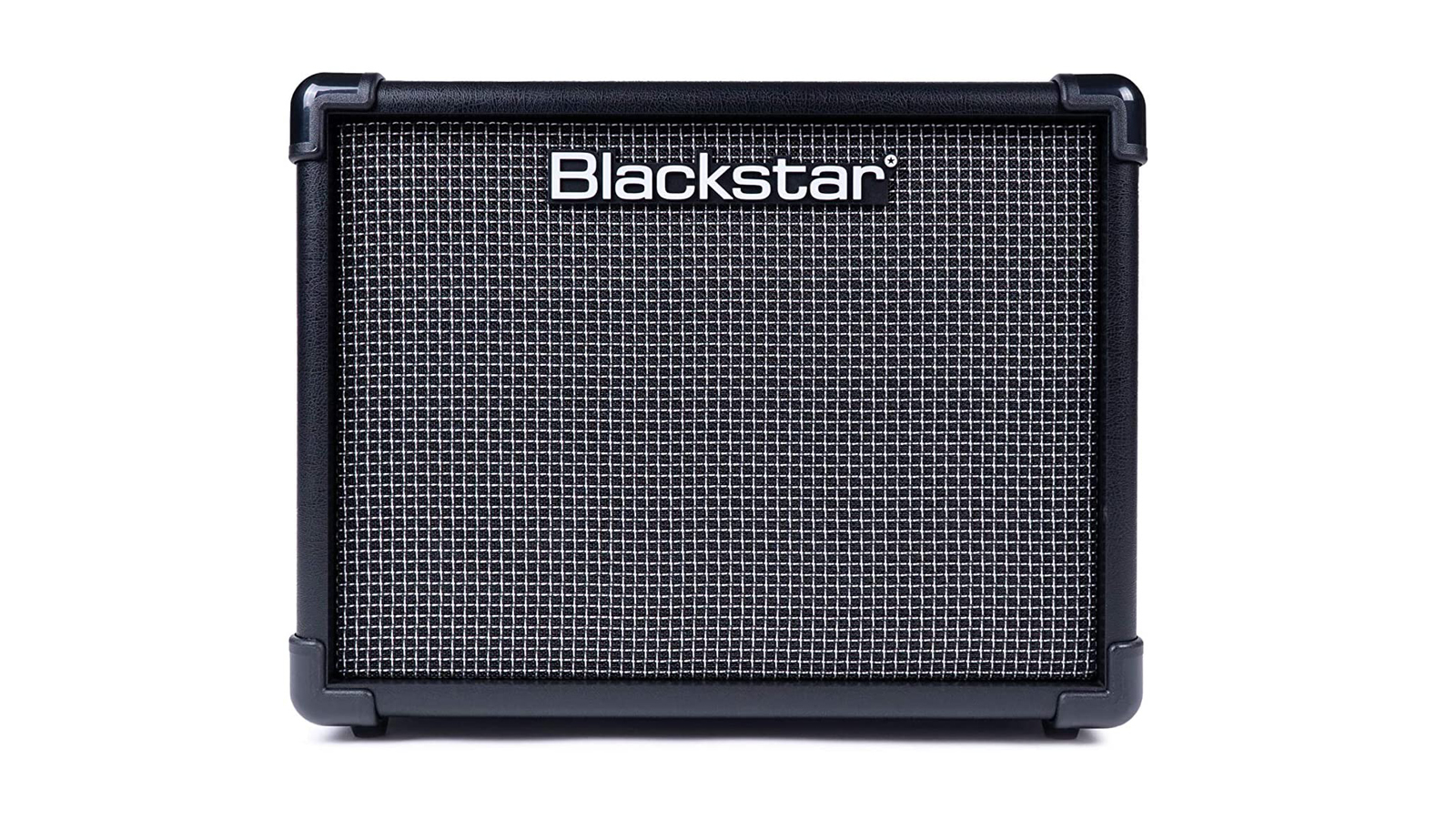
Specifications
Reasons to buy
Reasons to avoid
Blackstar is a serial innovator and the ID:Core V3 is definitely made with the modern guitar player in mind. The busy control panel gives you a plethora of amp tones, effects and connectivity options, making this one incredibly versatile amplifier.
Six amp types deliver a variety of clean and dirty sounds, covering everything from vintage chime to a tight, metal guitar tone. You can get some absolutely gorgeous crunch sounds out of it too, whether you like a ’70s classic rock vibe or a more modern indie guitar twang.
Onboard effects are delivered in super-wide stereo thanks to the speaker configuration, so the high-quality suite of reverbs, delays, and modulation effects sound absolutely stunning. You can stream directly to your smartphone and computer, and the Architect software allows for in-depth tone tweaking.
Read the full Blackstar ID:Core V3 Stereo 40 review
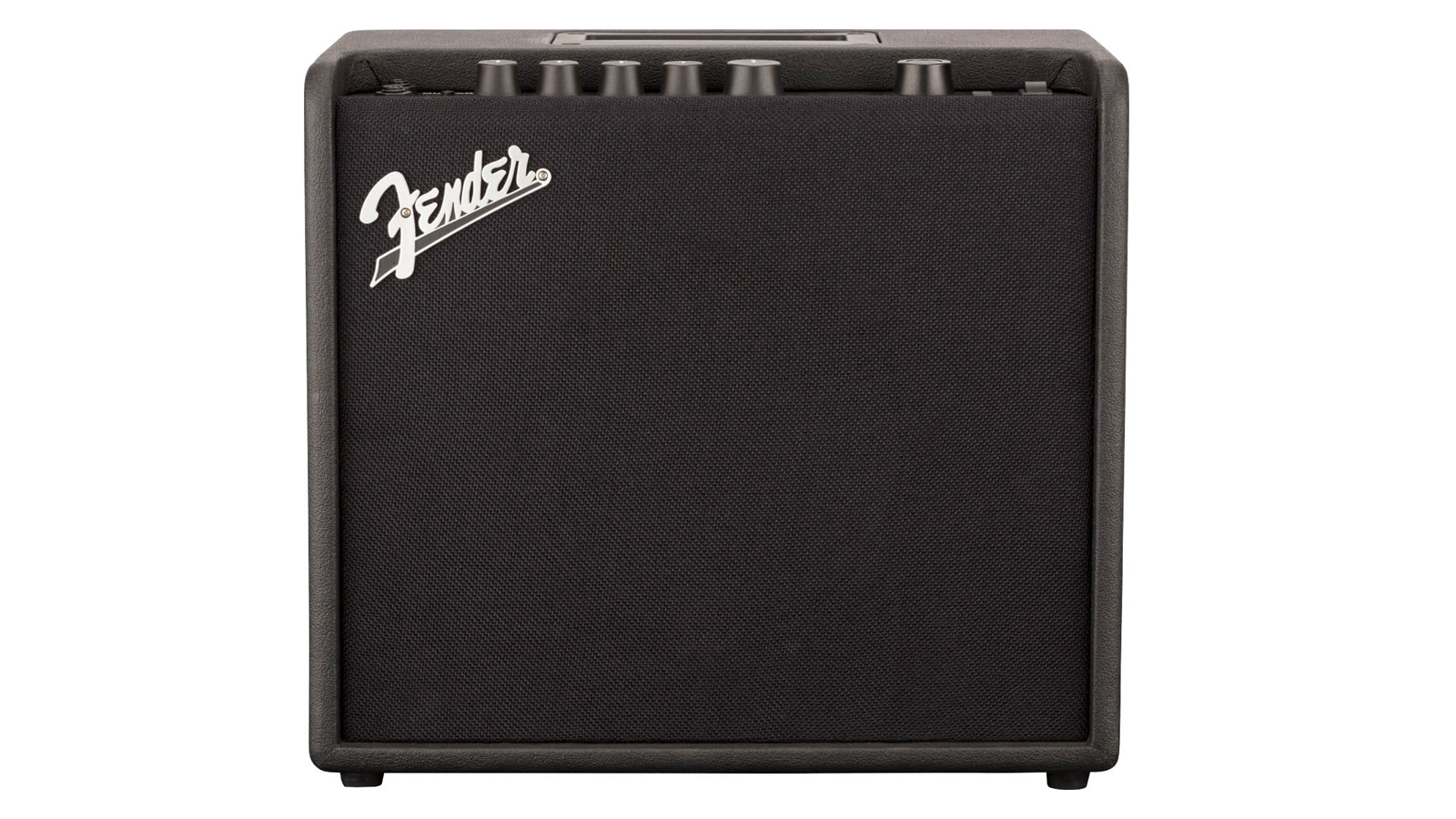
Specifications
Reasons to buy
Reasons to avoid
The Fender Mustang LT25 is a very modern take on the modelling amplifier that does away with busy control panels to get you a great tone, quickly. The onboard display guides your way through selecting your amp voice and effects, making for efficient sound selection.
There are 30 ready-made presets for you to select from, with everything from classic Fender clean tones to high gain metal madness. You can tweak the presets with a simple press of the large encoder button, adjusting the tone to your desired sound.
The suite of effects gives you everything from the more utilitarian compression to exotic sounds like the octaver and auto-wah. Having these on board will help you to push the boundaries of your guitar playing through experimentation, and there are some fantastic delay and reverb sounds too.
Read the full Fender Mustang LT25 review
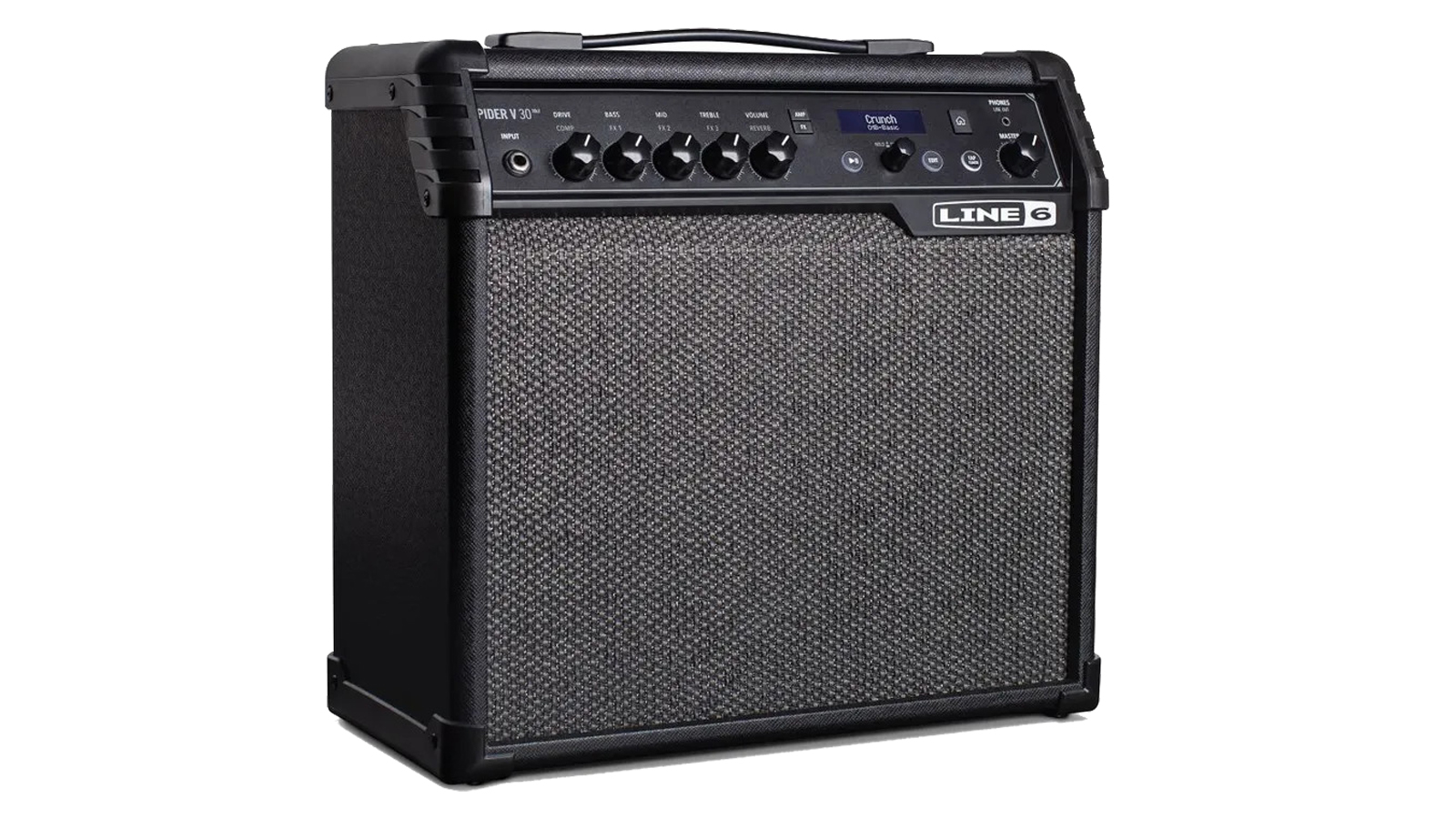
7. Line 6 Spider V MkII 30
Our expert review:
Specifications
Reasons to buy
Reasons to avoid
Line 6 was the originator of the modelling amp, and its Spider range has remained popular thanks to the huge amount of choice it offers. The Line 6 Spider V 30 gives you plenty of power for small gigs while offering lots of opportunities for finding your sound.
There are so many choices of amp tone here that it will take you days to get through them all. The cleans are lovely and pristine, while the crunch and high gain tones offer plenty of girth for harder and heavier riffing.
You can control everything with your smartphone if you wish, which offers a nicer interface than the tactile controls on the front of the amp. It even comes bundled with a copy of Cubase so you can lay down demos whenever inspiration strikes.
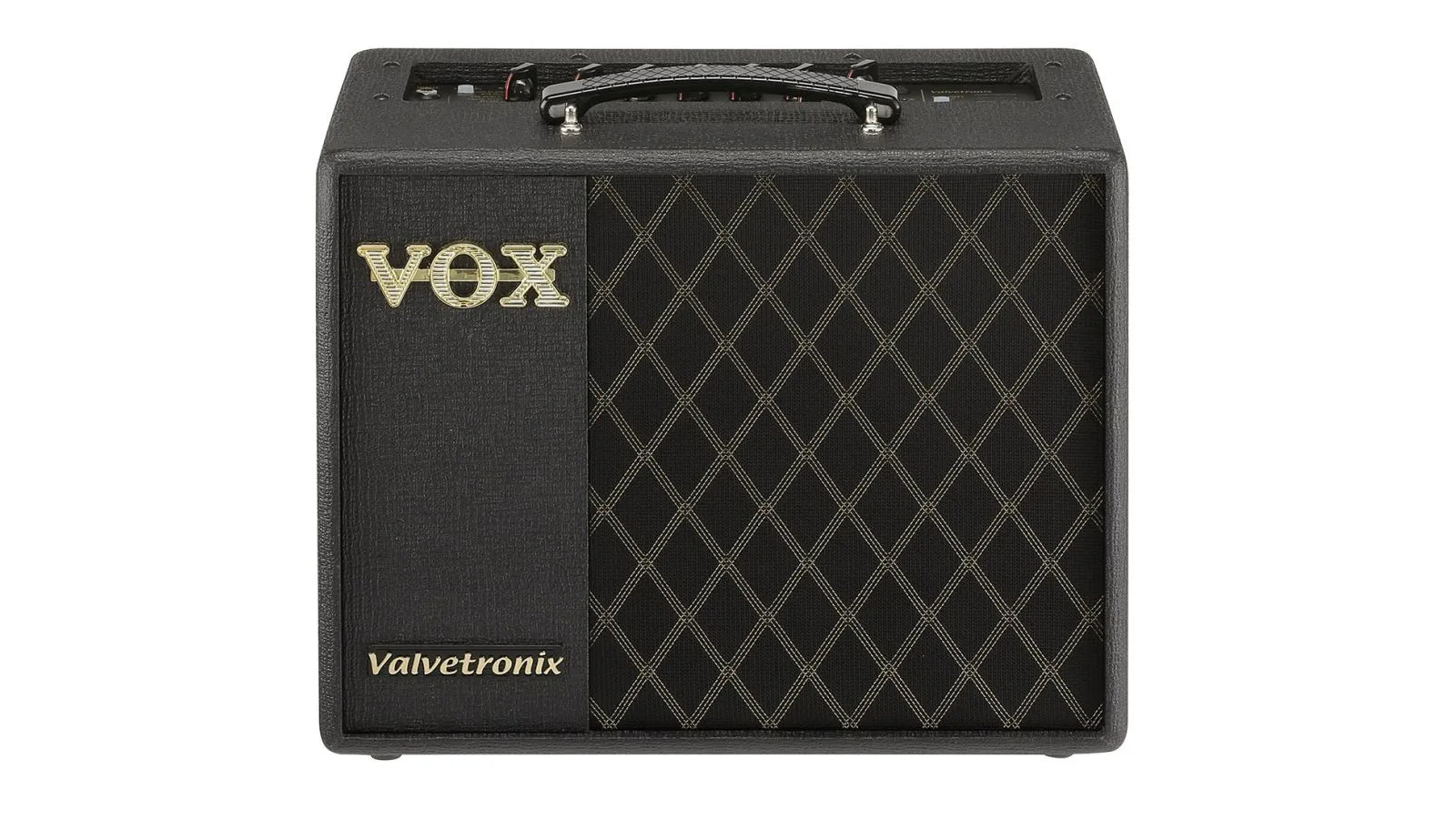
8. Vox Valvetronix VT20X
Our expert review:
Specifications
Reasons to buy
Reasons to avoid
The Vox Valvetronix VT20X is a hybrid amplifier that aims to put realistic valve amp tones within the grasp of any guitar player. Featuring an actual 12AX7 tube in the preamp section, it delivers the warmth and touch sensitivity so loved by guitarists across the globe.
There are a lot of amp models and features here which can be a little overwhelming at first, but once you spend some time with it you’re sure to find your perfect sound. It does Fender-style Tweed, Marshall-type crunch, and of course, the classic Vox Type-A chime.
With the 20 built-in effects, you won’t find anything particularly experimental, but all of them are very usable, accentuating the amp tones well. The included Vox tone room software lets you download some amazing presets that emulate many famous guitar players’ rigs.
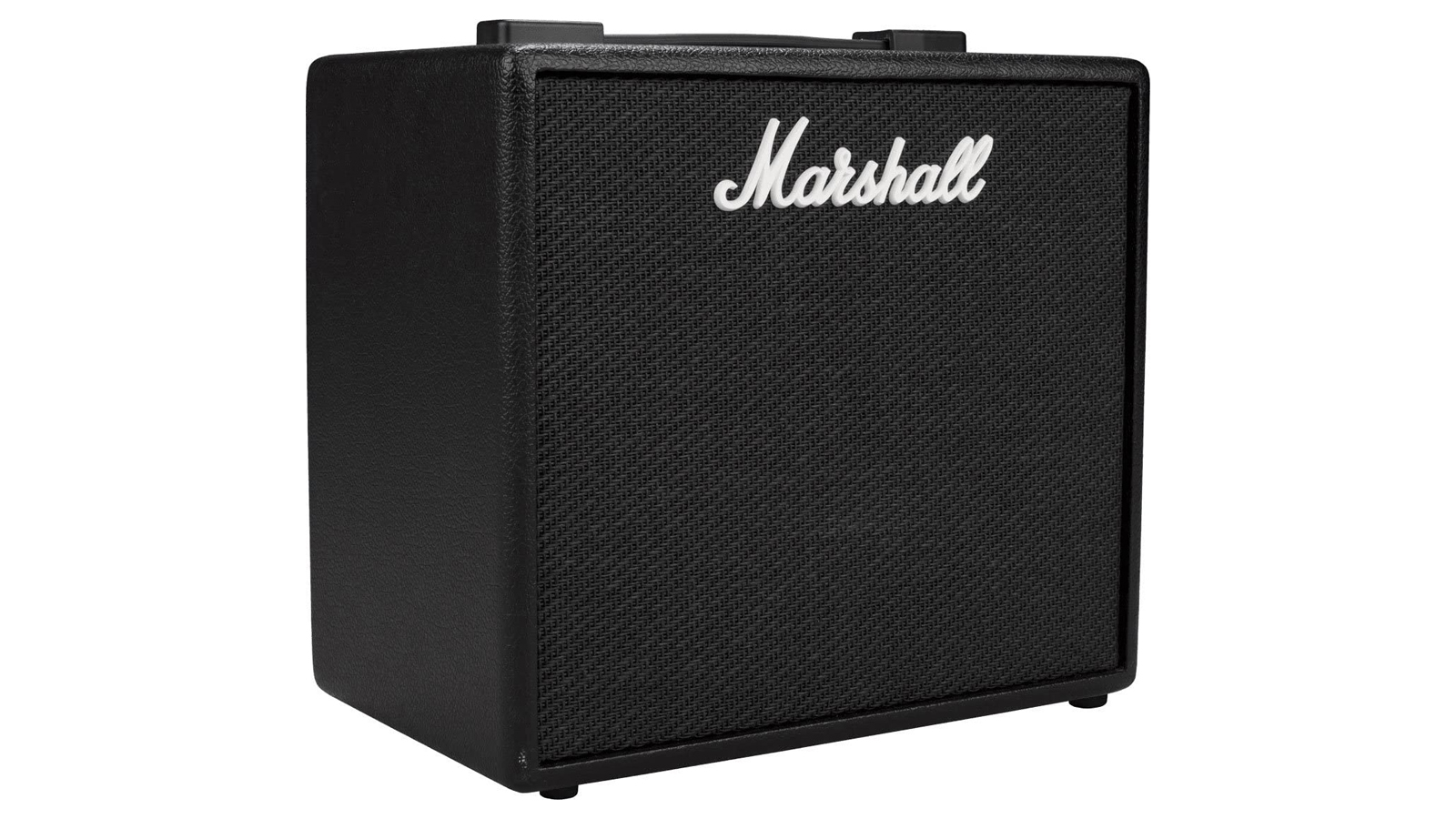
Specifications
Reasons to buy
Reasons to avoid
The Marshall CODE25 represents the British amp brand’s first foray into the world of modelling amps, aiming to bring the stable of classic Marshall tones into one handy package. It comes pre-loaded with 100 presets to get you up and running quickly.
There are plenty of awesome tones here, with searing lead tones that simulate pushed tube amps as well as classics like the Marshall Plexi Super Lead sound. The majority of the presets are usable out of the box too.
Onboard effects include all the usual suspects like reverb, delay, and modulation. When you connect the Marshall Gateway app you can sculpt the effects and amp tones in minute detail, with the amp reacting in real-time to help you dial in your perfect guitar tone.
Read the full Marshall Code 25 review

10. Roland Cube 10GX
Our expert review:
Specifications
Reasons to buy
Reasons to avoid
The Roland Cube 10GX delivers a surprising quality of amp tone considering its small size and low price point. Using it in conjunction with Roland’s Cube Kit app allows you to unlock even more amp tones, expanding this amplifier’s sonic palette.
The sound quality is phenomenal even as you crank it louder, with a harmonically rich clean tone that works well for jazz and country. The dirt settings are just as good too, with tight high gain sounds and articulate crunch tones aplenty.
The Cube Kit app is super easy to use, and while it would be even better with a wireless connection, that doesn’t detract from the high-quality amp tones on offer. An aux input lets you jam to your favourite tunes, whilst the headphone-out is great for silent practice.
Best guitar amps under $300/£300: Buying advice
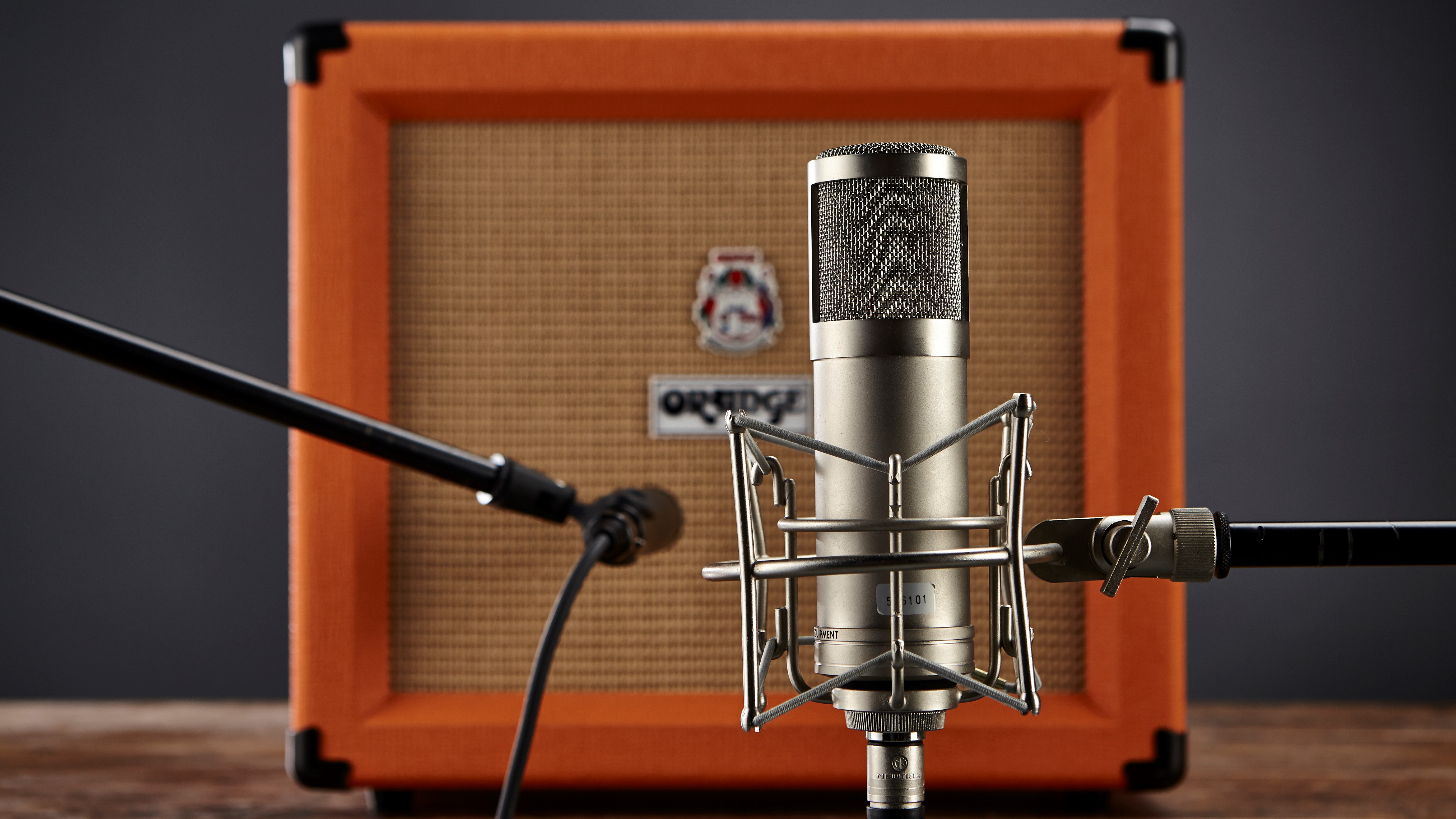
How do I choose a good guitar amp?
When purchasing an amplifier at this price point your choices are fairly limited. Amplifiers are expensive pieces of gear, particularly when it comes to the most highly sought-after tube-driven amps. The best amps under $300/£300 are more likely to be solid-state or modeling amps, aiming to emulate the warm sound of their tube amp cousins through digital wizardry.
That’s not to say you can’t find a great-sounding amp at this price point though. Modeling technology gets cumulatively better with each iteration, and thus draws ever closer to emulating the holy grail of guitar tone, the tube guitar amplifier.
What extra features will I need?
There are often a plethora of features on amplifiers in this price range so it’s a good idea to do your research so you can understand what it is you need. For example, if you’re spending the majority of your time practicing at home, a headphone-out is a must (check out our guide to the best guitar amp headphones if need to invest).
If you’re gigging then you’ll want to make sure you have enough power to compete with the other instruments in the mix. The type of music you play is also key – if you like heavier styles then an amplifier with a good drive channel will be a necessity. If you’re interested in experimenting with different effects then be sure to look out for an amplifier with these built-in.
What is a good size guitar amp for home use?
One of the best ways to determine what an amp is best suited to is its wattage. This figure gives you an idea of how loud the amplifier is, and thus what its capabilities are. Anything over 30 watts should be plenty for smaller gigs and rehearsals.
Conversely, amps over 30 watts will sound incredibly loud at home, so be prepared to turn it down or use headphones! Speaker size also plays a part in determining the sound. Universally speaking, the bigger the speaker, the more dynamic range you’ll have, particularly in the low end.
For the most part, a 10-inch speaker is more than enough to cover a guitar’s range, but if you like to down-tune or play heavier styles, a 12-inch speaker might be better suited to getting you that low-end girth you’ll need.
How we choose the best guitar amps under $300/£300
MusicRadar's got your back
Here at MusicRadar, we understand that not every guitarist has an unlimited budget when it comes to purchasing an amplifier. With our commitment to helping guitarists find quality gear at an affordable price, we have extensively researched and tested numerous guitar amps to identify the best options available under $300/£300.
To compile our list of top guitar amps in this price range, we combine our expertise, meticulous research, and insightful discussions with our editorial team. We consider factors such as sound quality, versatility, build quality, features, and value for money, ensuring that we showcase the finest guitar amps that deliver impressive performance without breaking the bank.
As guitarists ourselves, we know the importance of finding an amp that suits your playing style and delivers the tones you desire. Whether you're a beginner looking for your first amp or an experienced player seeking a reliable gigging companion on a budget, our goal is to provide reliable and informed recommendations that help you find the perfect guitar amp under $300/£300.
Related buying guides
- Got a bigger budget? These are the best guitar amps under $/£1,000
- And these are the best budget guitar amps under $500/£500
- Take a look at the best practice amps
- Limited space? Check out the best small guitar amps
- Go all out with the best high-end guitar amps
Want all the hottest music and gear news, reviews, deals, features and more, direct to your inbox? Sign up here.

Matt is a Junior Deals Writer here at MusicRadar. He regularly tests and reviews music gear with a focus on audio interfaces, studio headphones, studio monitors, and pretty much anything else recording-related. Matt worked in music retail for 5 years at Dawsons Music and Northwest Guitars and has written for various music sites including Guitar World, Guitar Player, Guitar.com, Ultimate Guitar, and Thomann’s t.blog. A regularly gigging guitarist with over 20 years of experience playing live and producing bands, he's also an alumnus of Spirit Studios, where he studied studio engineering and music production.